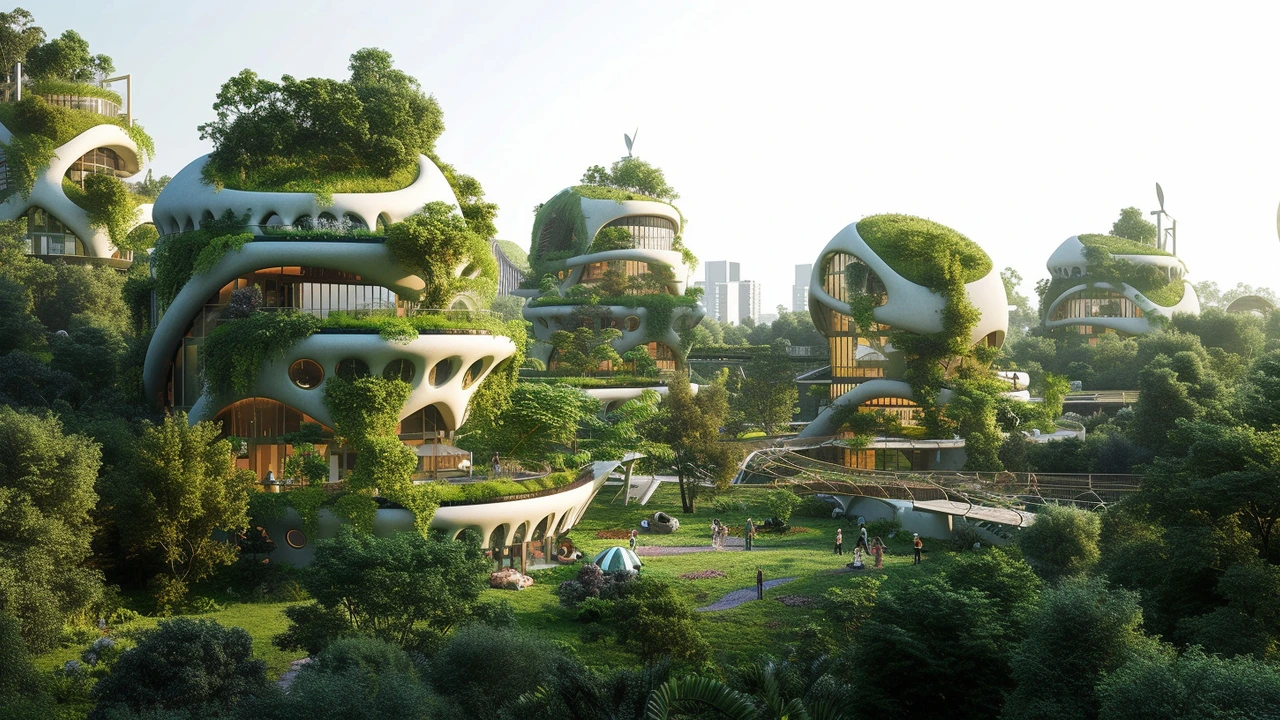As a passionate eco-warrior and architecture enthusiast, I've seen first-hand how sustainable architecture can pave the way for a greener future. This intriguing article will bring you on an enlightening journey exploring the critical role sustainable architecture plays in environmental conservation. We'll dive deep into how innovative, eco-friendly design solutions can combat various environmental challenges, contributing to a greener, healthier future. Get ready to kick-start your green initiative through the amazing world of sustainable architecture.
Eco-friendly Design: Make Your Space Greener Without Losing Style
Buildings cause roughly 40% of global carbon emissions, so design choices matter more than ever. You don’t need a full overhaul to make a real difference. Small moves—better insulation, smarter orientation, and low-impact materials—add up. This guide gives clear, usable steps you can apply to a house, apartment, or small commercial project.
Quick wins you can do now
Start with insulation and air-sealing. Stretching your energy bill thinner is the fastest eco win: seal gaps, add attic insulation, and upgrade weatherstripping. Next, swap to LED lighting and smart controls—those bulbs last longer and cut electricity fast. Install low-flow faucets and a dual-flush toilet to trim water use without sacrificing comfort.
Look at windows and shading. Adding exterior shading, awnings, or blinds stops heat in summer and keeps light in winter if positioned right. If replacing windows, pick double- or triple-glazed units with a good U-value rather than chasing brand names. Daylighting matters: repositioning tasks and mirrors can reduce lamp hours and make rooms feel bigger.
Plan for systems and materials that last
Think beyond the paint. Choose materials with low embodied carbon and clear life-cycle benefits—recycled steel, reclaimed wood, or certified timber (FSC). Use low-VOC paints and finishes for healthier indoor air. When possible, pick modular or prefabricated elements: they cut waste and speed up construction.
Heating and cooling choices are big. Heat pumps run efficiently on electricity and pair well with solar panels. If you can, size systems to actual needs—oversized HVAC wastes energy. Add programmable thermostats and zoning so you only heat or cool rooms you use.
Consider water and site strategies: rainwater harvesting for irrigation, permeable paving to reduce runoff, and native landscaping to cut irrigation needs. Green roofs and walls improve insulation, slow stormwater, and add habitat in tight urban plots. They also lengthen roof life when designed correctly.
Certifications like Passive House, LEED, or local green building programs aren’t required, but they give useful checklists and performance targets. If certification feels heavy, use their principles: airtight envelope, continuous insulation, ventilation with heat recovery, and measured performance checks.
Finally, think long-term cost, not just upfront price. A slightly higher investment in efficient glazing, better insulation, or a quality heat pump typically pays back through lower bills and higher resale value. Track results: simple meters for energy and water show what’s working and where to tweak.
Want a short checklist? 1) Seal and insulate, 2) Upgrade lighting and controls, 3) Choose low-impact materials, 4) Install efficient HVAC and consider heat pumps, 5) Use shading, daylighting, and passive solar, 6) Add water-saving fixtures and landscape smartly. Follow these steps and your next project will use less energy, cost less to run, and feel better to live in—without being bland or clinical.

